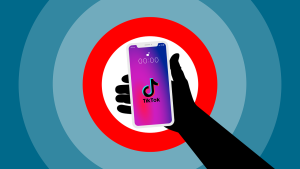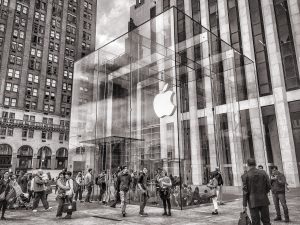
Authors: Steve Cernak and Luis Blanquez
This week a federal judge in California denied a preliminary injunction to block Microsoft’s $68.7 billion merger with Activision Blizzard Inc. Both parties may now move ahead and close the deal––subject to further clearance in the UK and Canada––before the July 18 contractual deadline. The FTC has decided to appeal the Court order. We do not yet know the grounds for the appeal but the Court hammered hard almost every single argument from the agency.
The Order includes a detailed background of this case. In a nutshell, the FTC alleges in its complaint that Xbox-maker Microsoft would be incentivized to block Sony PlayStation access to crucial Activision games, especially the very popular Call of Duty game. Below we discuss the main three key antitrust issues involved.
Market Definition
If any, this might be the only partial victory for the FTC in this case.
The Judge states in the Opinion that at this stage of the litigation the FTC need only make a “tenable showing” and she must accept the market definition proposed by the FTC: The Gen 9 consoles market––with Microsoft’s Xbox and Sony’s PlayStation as the only competitors. But at the same time, she did not shy away from highlighting her doubt about the FTC’s market definition surviving a full-blown court review and that she would likely also include Nintendo’s Switch. Why? Because despite its content and functional differences with the Xbox and PlayStation, the FTC failed to consider whether its price, portability, and battery are factors the customer balances when deciding which console to purchase, and because many of the most popular Activision games are available on the three consoles.
As to the FTC’s additional proposed markets of the multigame content library subscription services and cloud gaming, the Court assumed––without deciding––they were each their own product market.
This is as good as it gets for the FTC in this Opinion.
The Clayton Act Requires Competition to be Harmed Substantially, Which is a Higher Standard
A vertical merger involves companies at different levels of the supply chain and are usually less problematic from an antitrust point of view. That’s why for almost fifty years neither the FTC nor the DOJ rarely challenged them. But that has recently changed under the Biden administration and the new head of the FTC Lina M. Khan.
Indeed, this case is the third recent challenge to a vertical merger. The other two were the Illumina’s acquisition of Grail (currently on appeal to the Fifth Circuit; Bona Law filed an amicus brief supporting Illumina’s position) and the Meta-Within transaction. The latter was another unsuccessful attempt by this FTC to block a vertical merger.
All of these challenges have one thing in common: the FTC’s aggressive stretching of the Clayton Act’s coverage. And this last case is no different. Here the District Court–– citing the well-known AT&T acquisition of TimeWarner in 2018 (See United States v. AT&T, 310 F. Supp. 3d 161, 189–92 (D.D.C. 2018) states that:
“[T]he outcome “turn[s] on whether, notwithstanding the proposed merger’s conceded procompetitive effects, the [g]overnment has met its burden of establishing, through ‘case-specific evidence,’ that the merger of [Microsoft] and [Activision], at this time and in this remarkably dynamic industry, is likely to substantially lessen competition in the manner it predicts.” See AT&T, 916 F.3d at 1037.
In the Court’s own words: “it is not enough that a merger might lessen competition—the FTC must show the merger will probably substantially lessen competition. That the combined firm has more of an incentive than an independent Activision says nothing about whether the combination will “substantially” lessen competition. See UnitedHealth Grp., 630 F. Supp. 3d at 133 (“By requiring that [the defendant] prove that the divestiture would preserve exactly the same level of competition that existed before the merger, the Government’s proposed standard would effectively erase the word ‘substantially’ from Section 7”).
Thus, like the ALJ in the Illumina case, and the District Court in the AT&T case, Judge Scott Corley once again finds in this case that the FTC did not show anything more than a “mere possibility” of substantial lessening of competition. This is not the right legal test as we have stated in a recent amicus brief in the Illumina case.
Ability and Incentive: Both Necessary to Show a Foreclosure Theory
One of the keystones of the antitrust policy under the Biden-administration has been to challenge previous case law on how to block problematic transactions, both horizontal and vertical. But so far, the agency has not been particularly successful.
Again, in the Court’s own words:
“As a threshold matter, the FTC contends it need only show the transaction is “likely to increase the ability and/or incentive of the merged firm to foreclose rivals.” [ ] For support, it cites its own March 2023 decision in Illumina, 2023 WL 2823393, at *33. The FTC in Illumina reasons:
[t]o harm competition, a merger need only create or augment either the combined firm’s ability or its incentive to harm competition. It need not do both. Requiring a plaintiff to show an increase to both the ability and the incentive to foreclose would per se exempt from the Clayton Act’s purview any transaction that involves the acquisition of a monopoly provider of inputs to adjacent markets. 2023 WL 2823393, at *38 (cleaned up) (emphasis added).
The FTC in Illumina, however, provides no authority for this proposition, nor could it. Under Section 7, the government must show a “reasonable probability of anticompetitive effect.” Warner, 742 F.2d at 1160 (emphasis added). If there is no incentive to foreclose, then there is no probability of foreclosure and the alleged concomitant anticompetitive effect. Likewise, if there is no ability, then a party’s incentive to foreclose is irrelevant.”
Judge Scott Corley makes clear in her Order that to establish a likelihood of success on the merits for a foreclosure theory in this case, the FTC must show that the combined firm (1) has the ability to withhold Call of Duty, (2) has the incentive to withhold Call of Duty from its rivals, and (3) competition would probably be substantially lessened as a result of the withholding.
The Court held that while Microsoft may have the ability to foreclose competition because it would own the Call of Duty franchise, it has no incentive to do so. The Judge supports her conclusion on the fact that: (i) immediately upon the merger’s announcement, Microsoft committed to maintain Call of Duty on its existing platforms and even expand its availability, entering a new agreement to extend Activision’s obligation to ship Call of Duty at parity on PlayStation, (ii) sent Valve a signed letter agreement committing to make Call of Duty available on Steam for ten years, and (iii) expanded Call of Duty to non-Microsoft platforms, bringing Call of Duty to Nintendo’s Switch.
In addition, the Judge noticed that the deal plan evaluation model presented to the Microsoft Board of Directors to justify the Activision purchase price (iv) relied on PlayStation sales and other non-Microsoft platforms post-acquisition, and (v) reflected access to mobile content as a critical factor in favor of the deal.
The Court further concluded that (vi) Microsoft’s witnesses’ testimony consistently confirmed the lack of Microsoft’s plans to make Call of Duty exclusive to Xbox, (vii) Call of Duty’s cross-platform play was critical to its financial success, and (viii) agreed with Microsoft’s arguments anticipating irreparable reputational harm in case of foreclosing Call of Duty from PlayStation.
The judge reached the same conclusion on the likelihood of Microsoft blocking access through online subscription services. As for cloud gaming, the Court was also persuaded by Microsoft’s recent agreements with five cloud-streaming providers to freely license Activision games––including Call of Duty––for ten years, a key factor for the European Commission to also clear the transaction in the EU few months ago.
Following this ruling, Microsoft and UK antitrust officials have agreed to suspend litigation and focus on trying to reach an agreement on how the acquisition might be modified to address any competition concerns.
Supreme Court Case Law Obligates Merger Challenges to Address the Deal and Certain Proposed Fixes
The FTC desperately tried to also show that Microsoft’s binding offer was just a “proposed remedy” that may not be considered until the remedy phase, after a Section 7 liability finding.
As support, it relies on its own 2023 Illumina decision and E.I. du Pont, 366 U.S. But once again the Court disagrees with the FTC:
“E.I. du Pont does not support the Commission’s holding. It involved a remedy proposed after a finding of a Section 7 violation. The Court held: “once the Government has successfully borne the considerable burden of establishing a violation of law, all doubts as to the remedy are to be resolved in its favor.” E.I. du Pont, 366 U.S. at 334. E.I. du Pont says nothing about whether the merger-challenging plaintiff must address offered and executed agreements made before any liability trial, let alone liability finding; that is, whether the FTC must address the circumstances surrounding the merger as they actually exist.” This same point is key to the Illumina appeal currently pending in the Fifth Circuit.
Continue reading →
 The Antitrust Attorney Blog
The Antitrust Attorney Blog












